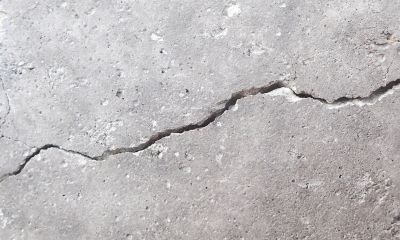Introducing cold liquid-applied waterproofing: a safe, effective, and environmentally-friendly solution offered by CCUK
If you’re looking for an environmentally-friendly waterproofing solution with mitigated risks, then cold liquid-applied waterproofing could be for you. Learn more about this safe and effective structural waterproofing method in this blog. If you think of any questions during your read, please call our specialist team on 01482 425250. We’ll help by answering your query immediately or by booking you in for a free comprehensive site visit and quote. Now, let’s get down to the nitty-gritty of cold liquid applied waterproofing.
What is cold liquid applied waterproofing?
Cold liquid-applied waterproofing, also known as cold fluid applied waterproofing, is an environmentally-friendly structural waterproofing system. This cutting-edge method does not require the use of heat but is still a highly-effective waterproofing tool for new builds and the repair or rehabilitation of ageing and damaged structures. Cold-applied liquid waterproofing uses liquid-applied membranes to coat almost any substrate, including:
✔️Concrete
✔️Brick
✔️Wood
✔️PVC
✔️Modbit.
Liquid waterproofing systems are made from natural bitumen (lasts 10-20 years), polyester (lasts 20-30 years), or polyurethane (lasts 10-25 years). They consist of one or a couple of coats. Systems include a primer, waterproofing liquid, reinforcing fibre, and a protective top coat. If you’re interested to learn which type of system will be used on your project, simply ask your specialist and they’ll be happy to share that information with you.
Do you need a liquid-applied waterproofing system?
This earth-friendly waterproofing system may have a very specific job to do – but it’s a crucial step in protecting any commercial building or structure from environmental damage. Cold liquid-applied waterproofing is most commonly used to shield roofs from rain, seepage, and other types of weathering. Without a watertight roof, your building or structure won’t stand the test of time. Its overall integrity will be compromised against daily elements like poor weather, even.
Liquid-applied waterproofing systems are typically used for:
- Roof waterproofing on new build structures
- Roof waterproofing on structural repairs – especially flat and pitched (without the need for removing the existing roof covering and any previously applied systems)
- Surfacing applications – for example, on balconies and walkways
- To improve roof elasticity (by 200%-600%)
These waterproofing systems protect against
Inclusive of, but not limited to:
- Rain/other types of water damage
- Wind
- Weathering
- Fatigue and ageing
- Dynamic and static indentation (the elastic response, or rebound)
- Extremely cold temperatures
- Extremely hot temperatures
- Plant roots
To learn more about the purpose of cold liquid-applied waterproofing systems, kindly call our specialists on [tel]. We’re always happy to answer your quick-fire questions, or we’ll book a practical site visit to further assess your needs. Just let us know!
The benefits of using cold fluid applied waterproofing
There is a multitude of benefits to using a cold waterproofing technique. These pros include, but are not limited to:
- The cold membranes can adhere to almost any type of structural surface
- They are resistant to chemicals
- High resistance to very cold or very hot temperatures
- Seamless and literal `watertight` waterproofing
- Our biggest PLUS which we discuss in this blog… no heating of the membranes. This means they are safer and kinder to the environment.
The lifespan of cold waterproofing systems depends on the type used. Typically, a system will last anywhere between 5 and 30 years before it needs to be reviewed.
Book your free site visit & quote with our specialists
Why is cold liquid applied waterproofing environmentally friendly?
As the name suggests, cold liquid applied waterproofing systems remain cold during application. They do not require the heating of waterproofing membranes like traditional structural waterproofing systems.
This means:
- That the release of harmful toxins is eradicated from the application process.
- Because no heat is required and therefore no equipment carrying the danger of setting alight, the risk of fire is completely removed from the application process. Along with causing injury to people and wildlife, fires can damage natural surroundings. Of course, there is no fire without smoke (or no smoke without fire), and the release of fumes and toxic gases is another damaging factor to the environment.
Other types of structural waterproofing systems
At CCUK, we provide a plethora of structural waterproofing systems. To find out more, simply select a blog or resource below.
- Waterproofing barrier systems
- An easy guide to liquid waterproofing
- Basement waterproofing systems the best product for waterproofing basement walls
Can’t find what you’re looking for? Kindly call our friendly and experienced team on 01482 425250. We look forward to assisting you!




